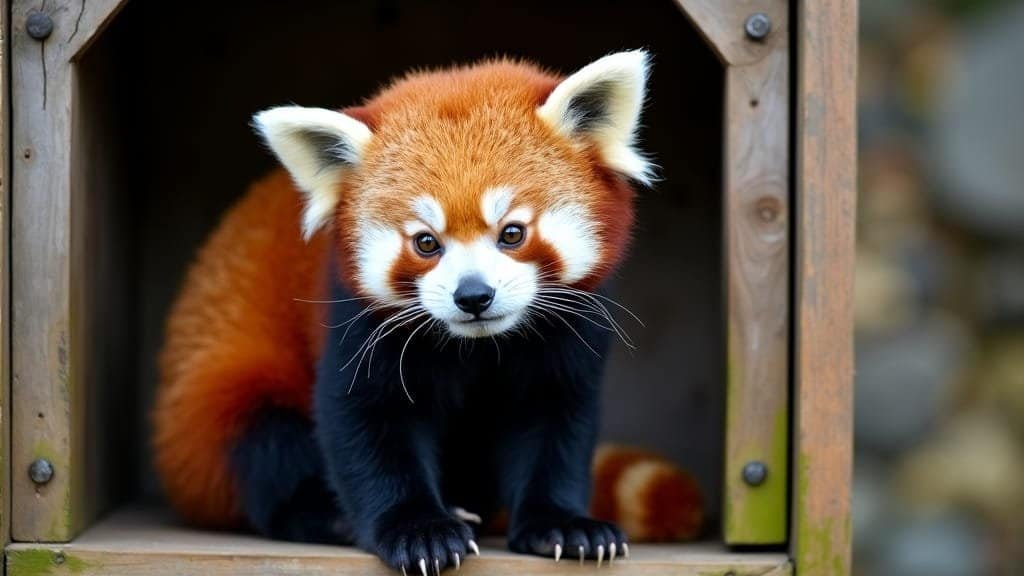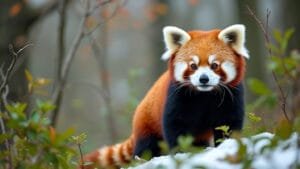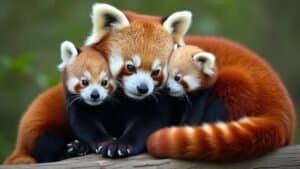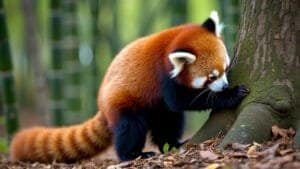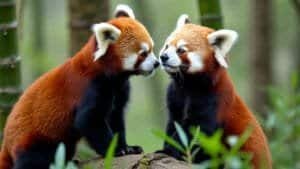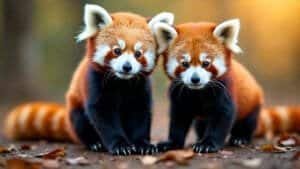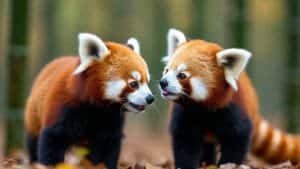Red pandas have a unique gestation period, lasting approximately 134 days, though delayed implantation can extend this timeline. Unlike mammals with fixed pregnancy durations, red pandas use a biological adaptation that allows fertilized embryos to remain dormant before implanting in the uterus, ensuring that cubs are born at the most favorable time of year
This process allows red pandas to align cub births with the peak growth of bamboo shoots, their primary food source. Cubs are typically born between June and July, a period when nutrient-rich bamboo is abundant, providing essential resources for lactating mothers. During pregnancy, female red pandas prepare dens in tree hollows or rock crevices, where they give birth to small, blind, and vulnerable cubs that require constant maternal care
Because of habitat loss and climate change, red panda reproduction is increasingly threatened. Conservation breeding programs play a critical role in monitoring pregnancy health and ensuring cub survival, both in the wild and in captivity. This article explores the gestation period of red pandas, how delayed implantation affects birth timing, and the conservation efforts protecting pregnant red pandas
The Length and Biological Process of Red Panda Gestation
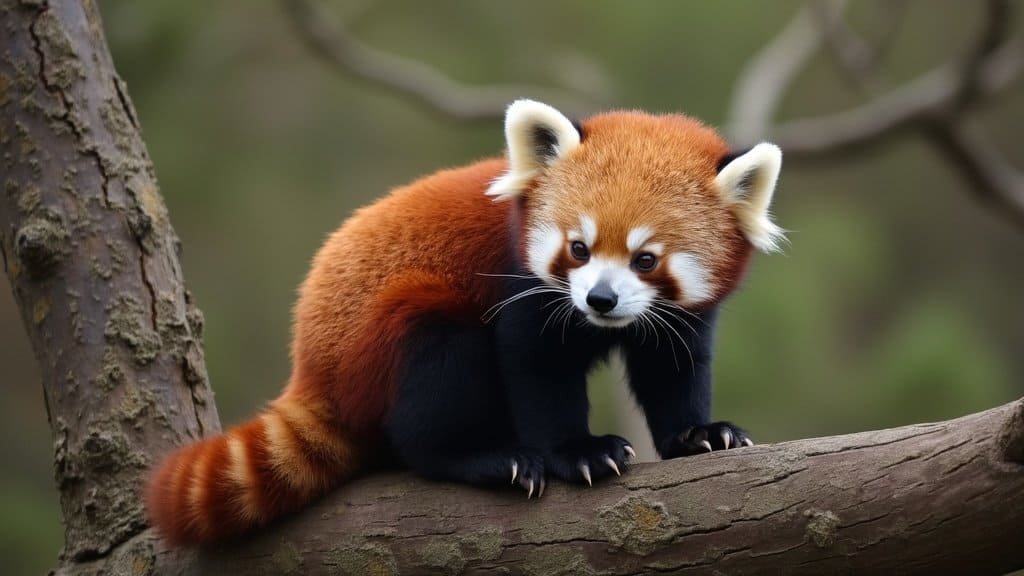
Red pandas experience a gestation period that lasts around 134 days, but this timeline is not fixed due to a unique biological process called delayed implantation. Unlike many mammals that experience continuous fetal development, red pandas have the ability to pause embryonic growth, ensuring that cubs are born at the most favorable time of year. This adaptation is essential for their survival, as it allows females to time births with peak bamboo availability, ensuring they have enough nutritional resources to support lactation and cub-rearing
The length of the gestation period can vary depending on environmental conditions, maternal health, and food availability. Studies have shown that in captive settings, where food is consistent and climate conditions are controlled, gestation typically follows a predictable schedule. However, in the wild, factors such as climate shifts and habitat disturbances can affect implantation timing, extending gestation anywhere between 112 and 158 days (National Zoo)
How Long Is the Red Panda’s Gestation Period?
Red pandas have an average gestation length of 134 days, though this can fluctuate due to delayed implantation. This reproductive adaptation allows the fertilized embryo to remain in a dormant state for several weeks or months before implanting in the uterine wall. This delay ensures that cubs are born during early summer (June–July), a period when bamboo shoots and young leaves provide maximum nutrition for nursing mothers
If implantation occurs earlier than usual, gestation can be as short as 112 days. Conversely, if conditions are unfavorable, implantation may be postponed, extending gestation to 158 days. This variability highlights the red panda’s ability to adapt to changing environmental conditions, making delayed implantation a critical survival strategy in the wild (Zoo Atlanta)
The Role of Delayed Implantation in Pregnancy Timing
Delayed implantation is a key reproductive strategy for red pandas, allowing them to control the timing of pregnancy and birth based on external environmental factors. After mating occurs between January and March, fertilized embryos do not immediately begin development. Instead, they remain in a suspended state, waiting for optimal conditions before attaching to the uterus
This delay gives female red pandas flexibility in managing pregnancy, ensuring that cubs are born when temperatures are mild and food is abundant. Without this process, cubs could be born too early in the spring, when bamboo growth is still recovering from winter dormancy, or too late in the summer, when competition for food increases. Delayed implantation maximizes cub survival rates by synchronizing births with seasonal food cycles (Animal Diversity Web)
Another advantage of delayed implantation is that it allows pregnant females time to prepare dens before birth. As pregnancy progresses, females begin to build nests in tree hollows, rock crevices, or dense vegetation, gathering leaves, moss, and soft plant materials to create a warm, insulated environment. This preparation ensures that newborn cubs, which are blind and highly vulnerable at birth, have a secure and protective space to develop in their first few weeks of life
How Gestation Ensures Cubs Are Born at the Right Time
The red panda’s gestation period is designed to align cub births with peak food availability, ensuring that mothers have enough energy to support milk production and cub care. Bamboo, which makes up 85–95% of a red panda’s diet, undergoes seasonal growth cycles, with the highest nutrient levels occurring in early summer. By timing cub births to coincide with this seasonal food peak, red pandas increase the chances of successful cub-rearing and population stability
Studies from the National Zoo show that pregnant red pandas consume more bamboo in the final weeks of gestation, increasing fat reserves to sustain lactation. If bamboo availability is low during pregnancy, females may struggle to produce enough milk, leading to weaker cubs and lower survival rates. This emphasizes the importance of maintaining healthy bamboo forests, as any disruption in bamboo cycles can negatively impact reproduction and cub development
For further insights into red panda gestation and pregnancy adaptations, visit the Animal Diversity Web’s research on red panda reproduction
Factors Affecting Pregnancy and Birth in Red Pandas
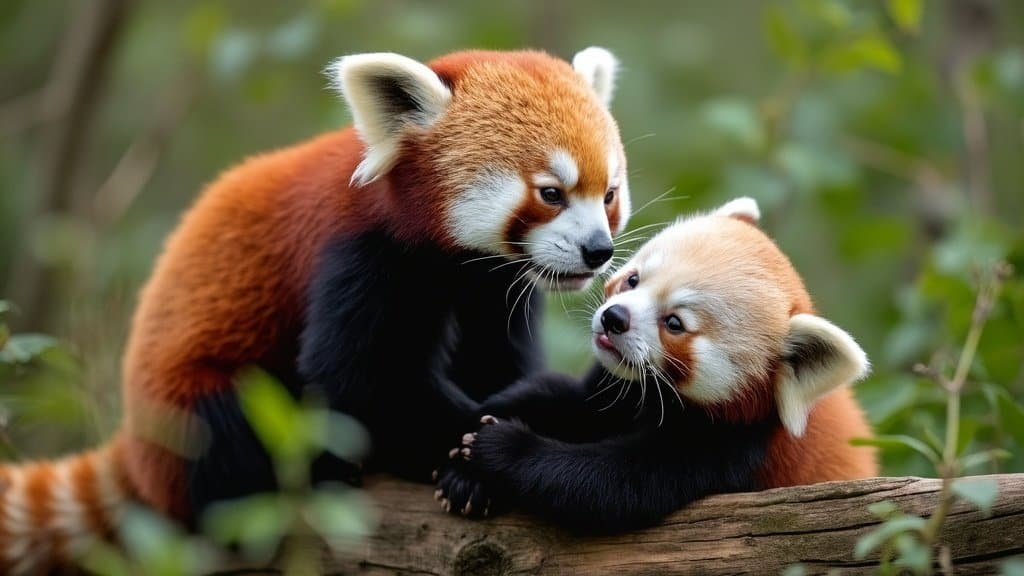
Red panda pregnancies are influenced by a combination of environmental conditions, food availability, and biological changes that ensure cubs are born under optimal survival conditions. Unlike species with fixed gestation periods, red pandas have flexible pregnancy timelines due to delayed implantation, which allows them to adjust birth timing based on external factors such as climate, resource availability, and habitat stability
Pregnant females undergo significant physical and hormonal changes as they prepare for birth. They must increase food intake, find a secure nesting site, and conserve energy to support fetal development and lactation. In the wild, habitat destruction and climate fluctuations can disrupt these natural processes, affecting both pregnancy success and cub survival
Environmental Conditions and Their Impact on Gestation
Environmental stability is one of the most important factors influencing red panda gestation. In healthy, undisturbed habitats, females can carry out pregnancy without major stressors, ensuring that cubs are born at the ideal time of year. However, when environmental conditions change—due to deforestation, climate shifts, or food shortages—pregnant red pandas may face delays in implantation, lower fetal survival rates, or poor cub health
One of the biggest environmental challenges for red pandas is climate change, which affects seasonal bamboo growth cycles. Since red pandas depend on young bamboo shoots and leaves to sustain pregnancy and lactation, disruptions in bamboo availability can lead to weaker females and lower reproductive success. Research from the National Zoo suggests that climate-driven variations in bamboo growth have already begun to impact pregnancy rates and birth timing in some wild populations
Temperature fluctuations can also affect pregnancy progression. In years with warmer winters, red pandas may experience hormonal imbalances that disrupt their natural reproductive cycles. In contrast, severe cold spells can increase metabolic stress, forcing pregnant females to expend more energy to maintain body temperature, which may reduce the resources available for fetal development
How Food Availability Influences Pregnancy Success
Red pandas rely heavily on bamboo as their primary food source, and its availability plays a major role in pregnancy outcomes. Pregnant females must consume larger quantities of bamboo to maintain nutrient stores for gestation and lactation, but because bamboo is nutritionally poor, they must eat constantly to meet their energy needs
If bamboo forests are damaged by deforestation or seasonal droughts, pregnant red pandas may struggle to consume enough food to sustain a healthy pregnancy. This can result in weaker cubs, reduced milk production, and lower cub survival rates. In extreme cases, females may resorb embryos or fail to sustain a pregnancy if their nutritional needs are not met
Captive breeding studies at Zoo Atlanta have shown that pregnant red pandas given higher-calorie diets tend to have healthier cubs with stronger birth weights. This highlights the critical role of food security in red panda reproduction, reinforcing the importance of protecting wild bamboo forests to support healthy pregnancies
Physical and Hormonal Changes During Pregnancy
As pregnancy progresses, female red pandas undergo noticeable behavioral and physiological changes to prepare for birth. They become less active, spending more time resting and conserving energy. Their diet remains focused on bamboo, but they may also consume additional plant materials or high-protein foods to support fetal growth
One of the most significant pregnancy changes is nest-building behavior. As birth approaches, females begin searching for a secure, enclosed space, such as a tree hollow, rock crevice, or dense vegetation, where they construct a nest using leaves, moss, and soft plant fibers. This nest provides insulation and protection for the cubs, which are born blind and unable to regulate body temperature in their early weeks
Hormonal fluctuations also play a key role in pregnancy progression and cub development. Increased levels of progesterone help maintain fetal growth, while shifts in prolactin prepare the mother for milk production. Any disruption to these hormonal cycles—whether from stress, malnutrition, or environmental instability—can increase the risk of pregnancy complications or result in weaker cubs at birth
Ensuring that pregnant red pandas have stable, well-protected habitats is crucial for successful pregnancies and healthy cubs. Conservation programs focused on habitat protection, food security, and reproductive monitoring play an essential role in supporting red panda populations. For more details on how pregnancy conditions affect red panda births, visit the National Zoo’s research on red panda reproduction
Conservation Efforts to Protect Pregnant Red Pandas
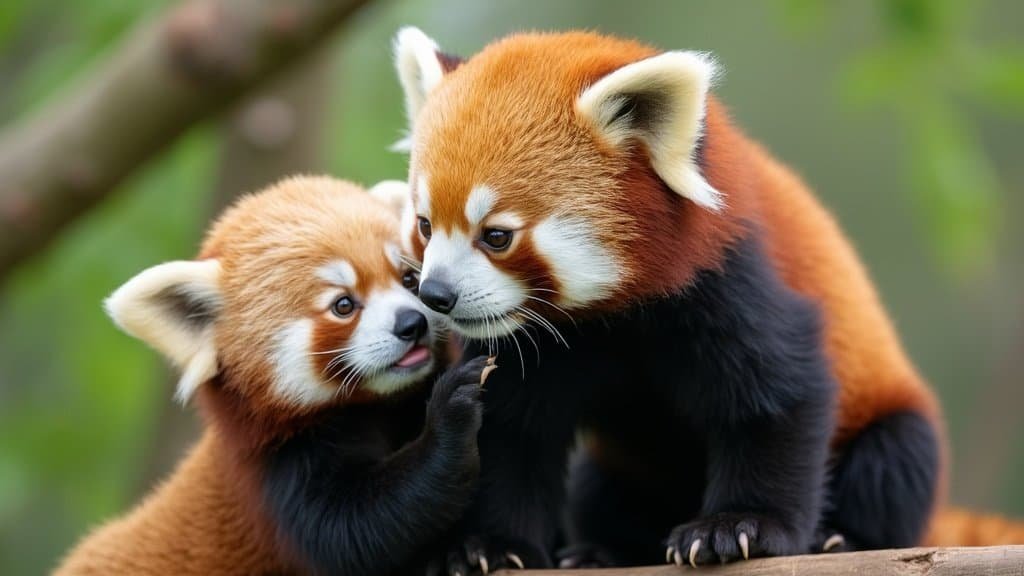
Conservation efforts are essential to ensuring healthy pregnancy outcomes for red pandas, as habitat loss, climate change, and human activity continue to threaten their ability to reproduce successfully in the wild. Pregnant red pandas rely on stable environments, access to nutrient-rich bamboo, and safe nesting sites to carry their cubs to term and provide proper maternal care. However, deforestation and environmental instability are making it increasingly difficult for females to sustain healthy pregnancies
Conservation programs focus on habitat protection, captive breeding programs, and scientific monitoring to support pregnant red pandas and their cubs. By safeguarding natural bamboo forests, restoring wildlife corridors, and improving captive care practices, these efforts help stabilize red panda populations and increase reproductive success rates
How Habitat Loss Affects Red Panda Reproduction
One of the biggest threats to pregnant red pandas is habitat destruction, which has reduced their natural range by nearly 50% in recent decades. Deforestation for agriculture, logging, and human expansion has led to fragmented populations, making it harder for red pandas to find suitable nesting areas and maintain access to year-round food sources. Pregnant females, in particular, are vulnerable to habitat loss, as they need secure dens and undisturbed environments to successfully carry their cubs to term
When forests are fragmented, pregnant red pandas may be forced into suboptimal nesting sites, exposing their cubs to higher risks of predation, harsh weather conditions, and resource competition. Additionally, reduced access to nutrient-rich bamboo forests can result in weaker pregnancies, lower birth weights, and higher cub mortality rates. Without sufficient food and safe nesting areas, the overall reproductive success of red pandas declines, posing a serious challenge to population stability
Conservationists are working to combat habitat destruction by establishing protected reserves, preventing illegal deforestation, and implementing sustainable land-use policies. These efforts aim to restore natural red panda habitats, ensuring that pregnant females have access to the resources they need to support healthy pregnancies
Conservation Programs Supporting Red Panda Breeding
To counteract the effects of habitat destruction and declining birth rates, several conservation organizations have implemented breeding and protection programs designed to improve reproductive success in both wild and captive populations. The Red Panda Network, WWF, and national zoos worldwide are actively working to preserve red panda breeding habitats, monitor pregnancies, and support newborn cub survival
One of the most effective conservation strategies is the establishment of protected wildlife corridors, which allow red pandas to move freely between fragmented forests, increasing their access to safe denning sites and diverse genetic pools for reproduction. By maintaining habitat connectivity, these corridors help ensure that pregnant females can find secure nesting areas without being restricted to isolated forest patches
In captivity, zoological breeding programs play a crucial role in maintaining genetically diverse populations and supporting scientific research on red panda reproduction. Many breeding programs track pregnancy progress using ultrasound technology, ensuring that expecting mothers receive proper nutrition, medical care, and environmental enrichment. Captive-born cubs may also be candidates for reintroduction into the wild, strengthening declining red panda populations in their native habitats
Through community engagement, habitat restoration, and scientific research, conservation programs continue to play a vital role in sustaining red panda populations, ensuring that pregnant females and their cubs receive the protection they need to thrive
The Role of Captive Breeding in Population Sustainability
Captive breeding programs have become an essential tool in red panda conservation, helping to safeguard genetic diversity and prevent population decline. Given the challenges of reproduction in the wild, these programs provide a controlled environment where red pandas can breed safely, ensuring the survival of the species even as wild populations continue to face threats
Zoos and wildlife conservation centers worldwide have successfully managed red panda pregnancies, closely monitoring gestation periods, cub development, and maternal behaviors. Scientific advancements in reproductive health monitoring, ultrasound imaging, and hormone tracking have significantly improved pregnancy success rates, leading to an increase in healthy red panda births in captivity
Additionally, captive breeding facilities serve as important education and awareness platforms, allowing researchers to study red panda reproductive biology and maternal care behaviors in detail. This knowledge can then be applied to wild conservation efforts, helping to improve habitat management strategies, food resource planning, and breeding success in natural environments
Some captive-bred red pandas are selected for reintroduction programs, where they are gradually acclimated to semi-wild environments before being released into protected reserves. These programs aim to boost wild populations by introducing genetically diverse individuals into carefully managed habitats, ensuring that red panda populations remain stable and self-sustaining in the long term
By combining wild conservation efforts with captive breeding research, conservationists are working to ensure the survival of red pandas for future generations, protecting pregnant females and their cubs from the growing threats of habitat loss and environmental instability
For more information on conservation efforts supporting red panda reproduction, visit the Red Panda Network’s page on red panda protection
